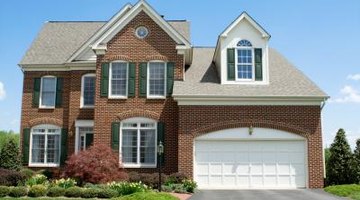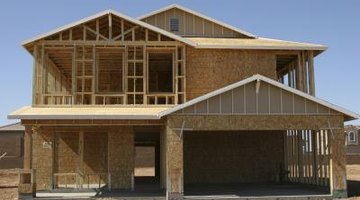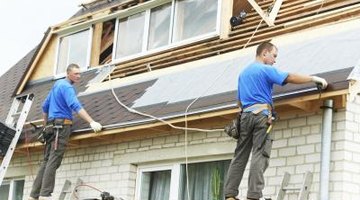Wood Vs. Brick House
Table of Contents
Choosing the right material for building or renovating a house is the cornerstone of comfort, quality and design. Both brick and wood are beautiful and practical choices for homes. They also come in a variety of colors, finishes, treatments and styles. Brick and wood are natural looking, durable and insulate well.

Choosing the right material for building or renovating a house is the cornerstone of comfort, quality and design. Both brick and wood are beautiful and practical choices for homes. They also come in a variety of colors, finishes, treatments and styles. Brick and wood are natural looking, durable and insulate well. You can build an all-brick house, a wood paneling house or a log house.
Location

Brick and wood are suitable for both city and country residences.
Brick works well in cold climates. It retains natural heat and stays warm a long time. This is especially true for properties and houses exposed to continuous sunlight. Brick protects well against storms and is a reliable option where storms are a threat. Wood is more convenient and appropriate in remote settings, in vales (where erosion and silt accumulation can damage brick walls) and where wood is widely available. Wood is relatively light compared to brick and more flexible.
Purpose

Brick has excellent property value, insures well and easily and can be resold with little effort. Many varieties of brick are guaranteed to last for one or two lifetimes. However, brick is marginally more expensive than wood. Its solid construction might pose a hindrance to basic renovations or additions should you wish to change the structure.
Wood is lovely and sensible for semi-permanent houses and cottages. It is biodegradable, affordable, healthy and safe. Wood homes are easier to renovate, alter and build than brick. Thick, rot-treated logs can last up to one hundred years or more. Hardwoods and older trees are strong and durable. Wood homes are a nice solution for those looking to build a retirement home, in natural settings or for environmentally sound purposes.
Advantages

Brick has several advantages in addition to weatherproofing, heat and property value. It is fireproof, termite resistant and energy efficient. This might reduce your household expenses through the years while providing a safe haven. Brick is incredibly stable. It requires no maintenance. Good quality brick such as paving or common brick--which has been carefully fired and hardened–will not chip or wear for several decades, if ever.
Wood also insulates well and is safe. Its flexibility, variety and natural properties make it easy to work with. As such, engineering solutions and architectural plans are often achieved well with wood. This is especially true for unusual or evolving home designs. Wood is healthy and relaxing. Some woods are thought to release terpenes, a substance that soothes the mind and body. This is known as the “forest bath effect” and is attributed to eucalyptus by the Australian Department of Agriculture and Food. Wood is also a natural air conditioner and absorbs humidity.
Disadvantages

The disadvantages of brick are largely related to the quality of the materials used. Poorly made bricks such as clinkers and older recycled bricks might be pitted, irregularly shaped, worn or prone to chipping. This can be a pain to fix and fit. In damp or humid climates, porous brick invites mold. It suffers damage as water and ice expand and contract in its pores. Brick is not cost-effective for many home builders. It can be damaged by vines.
Wood is vulnerable to natural disasters such as fire, infestations of termites and decomposition through rot. Wood is often treated against these problems, and thick logs are resistant to burning, but insuring and protecting wood can be difficult. The value of a home might be compromised by using wood materials, particularly in stormy areas. Wood can be torn or ripped away from homes and is susceptible to cracking when soaked.
Upkeep

Both wood and brick are easy to clean, and a simple wash or spray should do the trick. Again, quality brick requires little or no upkeep. It is resistant to damage, though some finishes might fade. In case of accidents, small pieces can be conveniently changed or replaced. Older or badly fired brick can require patching or new mortar.
Wood might require occasional treatment, refinishing or replacement. If it was well constructed, installed and finished to begin with, this work should be minimal. Cracks should be filled as they appear or before rainy or snowy seasons. In rustic areas or for crude cabins, natural fillers such as pitch made from sap, mud, sand or moss can be used.
The Drip Cap
- Choosing the right material for building or renovating a house is the cornerstone of comfort, quality and design.
- They also come in a variety of colors, finishes, treatments and styles.
- Brick works well in cold climates.
- This is especially true for properties and houses exposed to continuous sunlight.
- Hardwoods and older trees are strong and durable.
- Wood homes are a nice solution for those looking to build a retirement home, in natural settings or for environmentally sound purposes.
- Brick has several advantages in addition to weatherproofing, heat and property value.
- It requires no maintenance.
- Good quality brick such as paving or common brick--which has been carefully fired and hardened–will not chip or wear for several decades, if ever.
- It can be damaged by vines.
- Both wood and brick are easy to clean, and a simple wash or spray should do the trick.
- Older or badly fired brick can require patching or new mortar.
References
Resources
Writer Bio
Sarah York has been a freelance writer and editor for five years. Her work has appeared in such journals as The Danforth Review, Pisgah Review and The Renaissance of Teaching and Learning and in various online sources. She holds both a B.A. in English and M.A. in Creative Writing from the University of Toronto, as well as an M.A. in Literature from Western Carolina University.
Photo Credits
- jim pruitt/iStock/Getty Images
- jim pruitt/iStock/Getty Images
- Maciej Bogacz/iStock/Getty Images
- Peter Spiro/iStock/Getty Images
- TMSK/iStock/Getty Images
- Dmitry Kalinovsky/iStock/Getty Images
- GregorBister/iStock/Getty Images
More Articles



